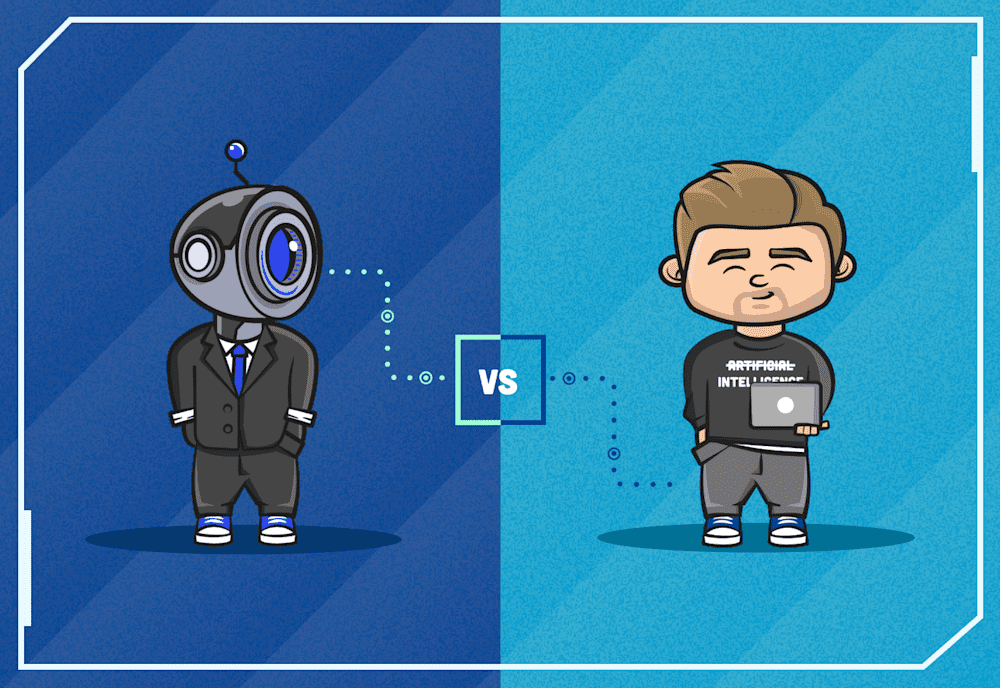How many times has someone asked if you were frightened that AI would replace you? If that number is somewhere in the hundreds, you’re not alone. AI is more powerful and impressive now than ever, but it still has limitations that make me confident that we won’t be replaced anytime soon.
Why? Let us count (five of) the ways.
1. We’re timelier than AI
It’s true that AI can be an asset when learning about most general topics, including past cybersecurity incidents. In fact, ChatGPT gives pretty decent recaps of major cyber events. But what about those pesky zero-day exploits when even seasoned security researchers are scratching their heads in real time?
AI is only as smart as its most recent update. And unfortunately, AI — especially free versions of AI-powered software — usually receives updates only periodically. That means time stands still for the AI tool right after it processes a new update.
If you’re dealing with anything that requires the most up-to-date information — from zero-day exploits to troubleshooting a recent software problem that postdates the latest AI update — AI won’t be much help. Cue one point for the humans.
2. We can solve the XY problem
Math haters, fret not: The XY problem has nothing to do with math and everything to do with end users. (Shocked? Yeah, me neither.)
XYproblem.info offers up a great definition of the phenomenon:
“The XY problem is asking about your attempted solution rather than your actual problem. This leads to enormous amounts of wasted time and energy, both on the part of people asking for help, and on the part of those providing help.”
In the IT world, the XY problem often surfaces when an end user comes up with their own solution to an original problem and then asks for help with that solution. Meanwhile, a sysadmin with full context could knock out the original problem easily.
Say, for example, that Bob realizes he can’t print. Every time he hits the print button, an error pops up that says the printer can’t be found. Bob’s solution (bless him) is to ask IT for a new printer. Meanwhile, the sysadmin who takes Bob’s ticket scratches her head because the IT team just purchased the printer this quarter. Digging deeper, our sysadmin friend discovers the actual problem: The printer hasn’t been added to Bob’s computer.
A few clicks later, Bob’s problem is resolved — no new printer needed. (Okay, it probably takes more than a few clicks since it’s a printer in question, but you get the point.)
If AI had been on the case, it’d have helped Bob shop around for a new printer because AI doesn’t have the ability to solve the XY problem. It only knows what the user tells it. Which leads me to my next point on how sysadmins win against AI.
3. We know what end users don’t know they don’t know
In the above example, Bob thought the printer was his problem. And while that’s probably the case most of the time because printers are evil spawns from the underworld, the printer was off the hook — and off Bob’s configured network devices — this time.
But only a human would be able to figure this out. Why? Because end users don’t know what they don’t know.
A human sysadmin could dive deeper into Bob’s problem, asking questions to figure out where the problem really lay. Bob assumed the problem was the printer, but the sysadmin knew the printer was brand new. She could ask the right questions to diagnose and solve the real problem at hand: the printer simply hadn’t been configured on Bob’s computer.
4. We know which details are necessary — and which aren’t
A few weeks ago, I asked my friend to help me come up with a PowerShell script. His response was to tell me, “Just a second,” before cracking open ChatGPT in another window. (Because of course it was. 😆)
It returned a simple script that got the job done, but to the human eye, it was a bit ... messy. ChatGPT added notes in places that didn’t need them because the commands were self-explanatory. There’s providing a helpful explanation, and then there’s making a script twice as long because of notes that don’t really need to be there.
When it comes to any type of code — from a PowerShell script to some Python wizardry — simple is best. There’s nothing worse than wading through large chunks of unnecessary text to find what you need, especially if the task at hand is to modify the script. Keep it simple, and you’ll thank yourself later.
5. We understand business-specific processes
Let’s talk about the elephant in the room that doubles as a problem child: that machine still running Windows XP.
The finance team depends on older software to function, and the older software runs only on Windows XP — or, gulp, an even earlier or worse operating system. So the IT team accepts the risks involved with running an unsupported operating system and mitigates it the best they can (e.g., air gapping the device).
So what happens the second you ask AI about a problem related to that device running the dated operating system? “Update to the latest version of Windows” is likely a solution for AI — but not for the finance team.
A human IT team is aware of this business-specific process while AI doesn’t know the first thing about it. That means that any help AI offers likely won’t cut it.
AI can be a powerful ally in many scenarios. It can serve as a sounding board, a code drafter, a pattern identifier, and even an explainer for certain topics. But some problems simply require one of us lovely humans to come in and fix them. (And not to brag, but if your problems tend to revolve around device management, our product suite can help!)
So the next time someone asks you if you’re concerned that AI might replace you, you can confidently respond, “No.” Because even if AI could do the five things described above, how’s it ever going to match your brilliant sense of humor, impeccable charm, and stunning good looks? 😉




